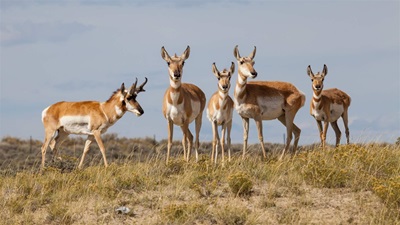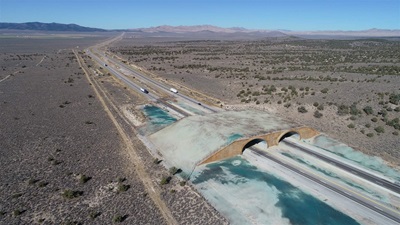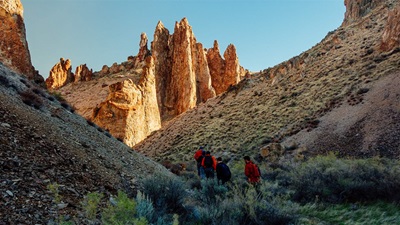National Forests in Colorado Need Stronger Protections to Help Nature—and Communities
Plan for Grand Mesa, Uncompahgre, and Gunnison forests is a good start but should better safeguard key lands, waters, and wildlife

Spread across nearly 3 million acres of public lands in west-central Colorado, the Grand Mesa, Uncompahgre, and Gunnison (GMUG) Nationals Forest are a haven for a diverse range of wildlife species and abundant recreational opportunities. The GMUG is overseen by the U.S. Forest Service under a land and resource management plan, commonly called a forest plan. In September, the Forest Service reached a milestone in its years-long effort to comprehensively update the GMUG plan: the release of a draft for public review and comment.
Although the draft plan presents a vision for the future of the GMUG that supports healthy lands, rivers, wildlife populations, and local communities, it doesn’t go far enough to make this vision a reality. Here’s how the Forest Service should improve the plan:
Improve management of wildlife habitat
The GMUG is home to several rare, threatened, and endangered species—such as the Canada lynx, the boreal toad, the Gunnison sage-grouse, and the Uncompahgre fritillary butterfly—big game, and many other species of wildlife and plants. The draft plan proposes a significant network of wildlife management areas (WMA) to provide wildlife habitat away from motorized and mechanized disturbances. This is an important step, but the Forest Service should also limit road and trail building in WMAs to their existing density and by reducing route density where the cap is already exceeded. These actions are essential to conserving wildlife corridors.
Protect more rivers as wild and scenic
The GMUG is a critical headwaters area, providing clean water to population centers throughout the Southwest that consume 1.9 million acre-feet of water from the forests annually; an acre-foot covers roughly the area of a football field to 1 foot in depth. The GMUG waters also sustain the forests’ ecosystems and the fish and wildlife that call them home. The Forest Service can safeguard the health of these important waters by evaluating whether GMUG rivers could be designated as wild and scenic—an evaluation the agency is required by law to do for each forest plan revision.
Of the thousands of miles of rivers in the forests, the GMUG’s draft plan identifies only 14 river segments, along with some of their tributaries, as eligible for wild and scenic status despite having data that many more rivers qualify for this designation. The Forest Service should identify additional rivers as eligible for wild and scenic protection in this plan.
Recommend more wilderness protections
The draft plan notes that recreation is the GMUG’s No. 1 contribution to the regional economy. Activities popular with residents and visitors alike include hiking, kayaking, hunting, fishing, and skiing in the backcountry. For example, the Forest Service issues more than 50,000 big game hunting permits annually for the GMUG. Importantly, these backcountry areas also contribute to the desirability of the region to new businesses, and numerous community organizations and county commissions support expanding wilderness.
And yet, the draft plan recommends only 34,000 acres (just over 1% of the GMUG) for wilderness designation. Recommending more wilderness would help conserve worthy areas until Congress decides whether to include them in the National Wilderness Preservation System. New research from Pew will help the Forest Service and the public identify ecologically valuable areas that may be appropriate for conservation.
Public engagement is a critical part of the forest plan revision process. By sharing your feedback with the Forest Service, you can help ensure that the final plan reflects a commitment to conserving biodiversity and supporting Colorado communities. The agency is accepting comments on its draft plan through Nov. 12 here.
John Seebach is a director and Blake Busse is a principal associate with The Pew Charitable Trusts’ U.S. public lands and rivers conservation project.
















